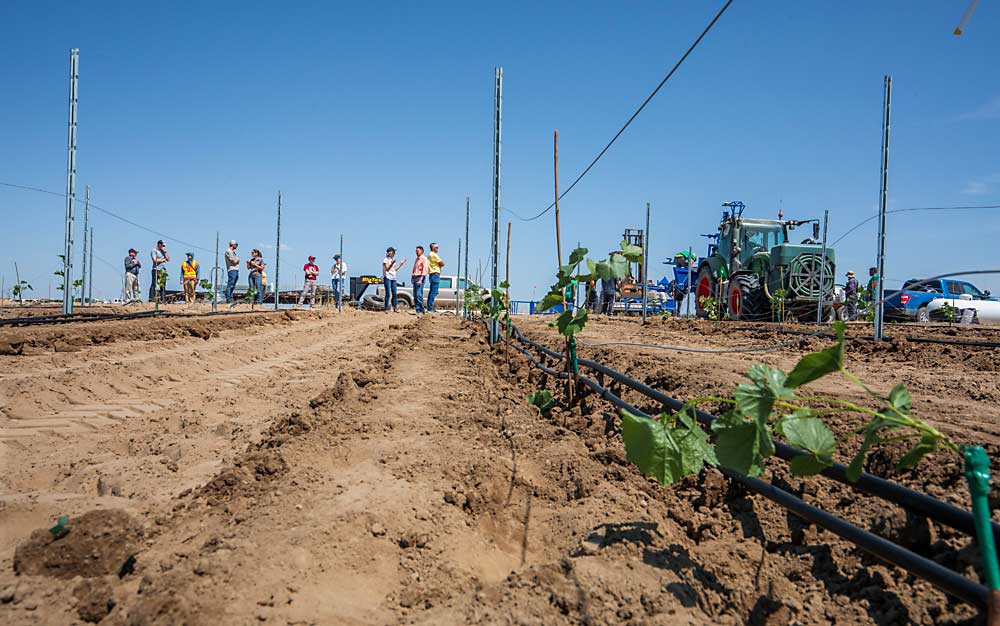
The newly planted research and extension vineyard at Washington State University’s Irrigated Agriculture Research and Extension Center in Prosser will soon yield practical soil health management practices for the state’s wine industry.
Soil plays a key role in wine grapes and wine quality, and it helps define the terroir or “place” of the wine. Devin Rippner, soil scientist for the U.S. Department of Agriculture, started focusing on grape production in the Pacific Northwest in 2021, and he immediately recognized the importance of a long-term agroecological research and extension site for grapes. He applied for an initiative grant that supported the planting of a new 4-acre wine grape vineyard this spring — as one of six long-term experimental sites planted in the state.
The vineyard project is part of the Washington Soil Health Initiative, an ambitious plan the state Legislature launched in 2019 to fund research, extension and demonstration of best management practices for soil health through long-term experimental sites planted across the state. Rippner runs the program in partnership with the Washington State Conservation Commission, Washington State Department of Agriculture and WSU.
Rippner received more than $860,000 from the initiative over a five-year period to establish the vineyard and conduct studies, plus additional funding from the USDA for lab equipment, waived land-use fees from WSU’s Prosser station, and funding from the Washington State Wine Commission. In June, he held a demonstration day at the vineyard to showcase the automated planting technology used.
Financial support by the Washington wine industry allowed Rippner to hire Elizabeth Gillispie as the vineyard manager. She oversees vineyard management duties, which frees up Rippner to conduct ongoing research.
Soil challenges
By design, soils of wine grape vineyards typically have low inherent fertility, and growers carefully balance vine nutrition to avoid excess growth and vigor. In Eastern Washington, wine grape growers also deal with high-pH soils, low water-holding capacity due to a lack of clay particles in the soil and low organic matter content, wind erosion and salinity or sodicity issues, according to Rippner.
Previous research, funded by the Washington wine industry, that surveyed the quality of water used for irrigation found that while most of the surface irrigation water is clean, well water can be high in sodium and can cause soils to become sodic over time. (See: “How’s the quality of your water?” — Good Fruit Grower, April 1, 2017.)
Rippner noted that nematodes, phylloxera and soil replant disease are other emerging issues growers may have to deal with when vineyards are replanted in the same location.
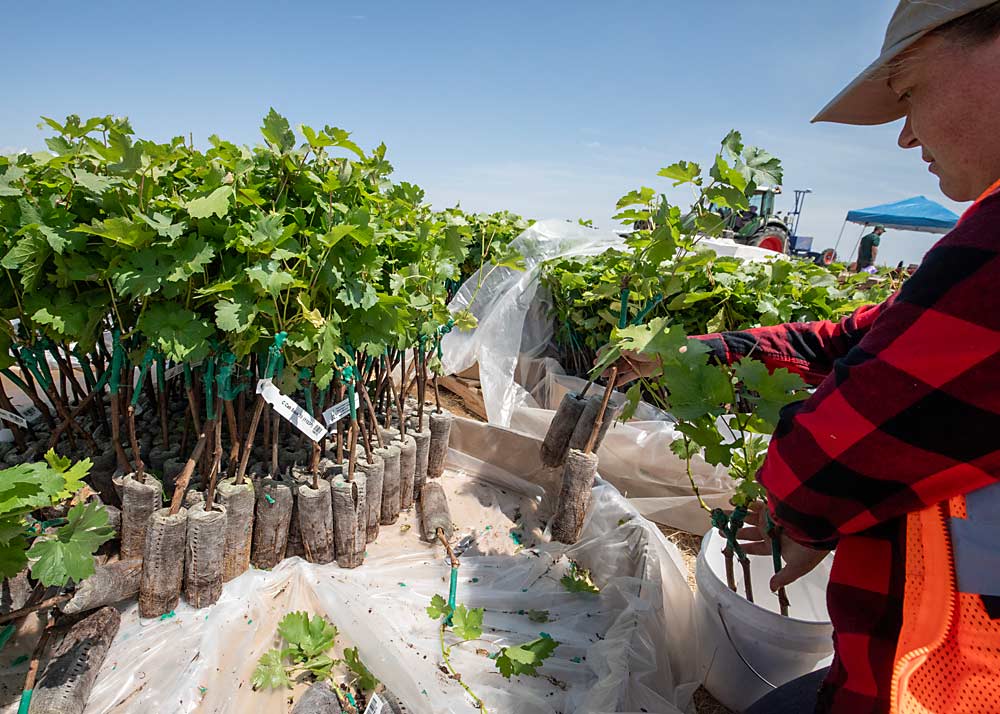
Outcome-based objectives
Rippner assembled an advisory committee of commercial wine grape growers, vineyard managers, winemakers, crop consultants and viticulture scientists to guide him in vineyard planning — a process that included rootstock selection, preplant preparation, vineyard establishment and deciding which management practices to evaluate. The vineyard includes Cabernet Sauvignon and Chardonnay cultivars that were grafted to 1103P rootstock and planted to a 9-feet by 5-feet vine row spacing. Vines are drip-irrigated. The vineyard has been designed to allow evaluation of high and low irrigation scheduling regimes. The project is designed to be outcome-based and flexible enough to study a range of management practices.
The long-term project aims to evaluate sustainable soil management systems that optimize wine quality. Initially, Rippner will compare five soil management treatments:
1) Business as usual: follows conventional practice of using typical synthetic nutrients and herbicides to control weeds, with cultivation done in the vine row.
2) Managed local vegetation: uses typical synthetic nutrients, mowing of the row alley and under the vine but allows local (native) vegetation to grow in the row alley.
3) Cultivated cover crop: uses typical synthetic nutrients and grows cultivated clover under the vine but not in the row alley. Utilizes mowing under the vine.
4) Organic matter additions: compost applied but no synthetic nutrients. Local (native) vegetation allowed to grow in the alley row. Mowing will be done in the alleyway and under the vine.
5) Aspirational management: compost applied but no synthetic nutrients. Cultivated clover grown as a cover crop under the vine, paired with perennial wheat grass in the row alley. Mowing will be done in the alleyway and under the vine.
In addition to measuring soil health metrics, Rippner will track labor costs and economics of the effectiveness of hilling up over the graft unions this fall for protection against winter injury. As rootstocks become more widely planted in the state, there is still much to learn about rootstock selection, graft union management and more. Compost will be applied in the vineyard this fall to combine the steps of compost incorporation into the soil with hilling soil over the graft union.
High-tech analysis
The Pacific Northwest National Laboratory in Richland is also involved in the project. Rippner will utilize PNNL’s computed tomography to turn 2D scans of soil core samples into 3D images. This will allow Rippner to visualize changes in soil porosity, soil aggregate distribution and plant root growth from the different soil management treatments.
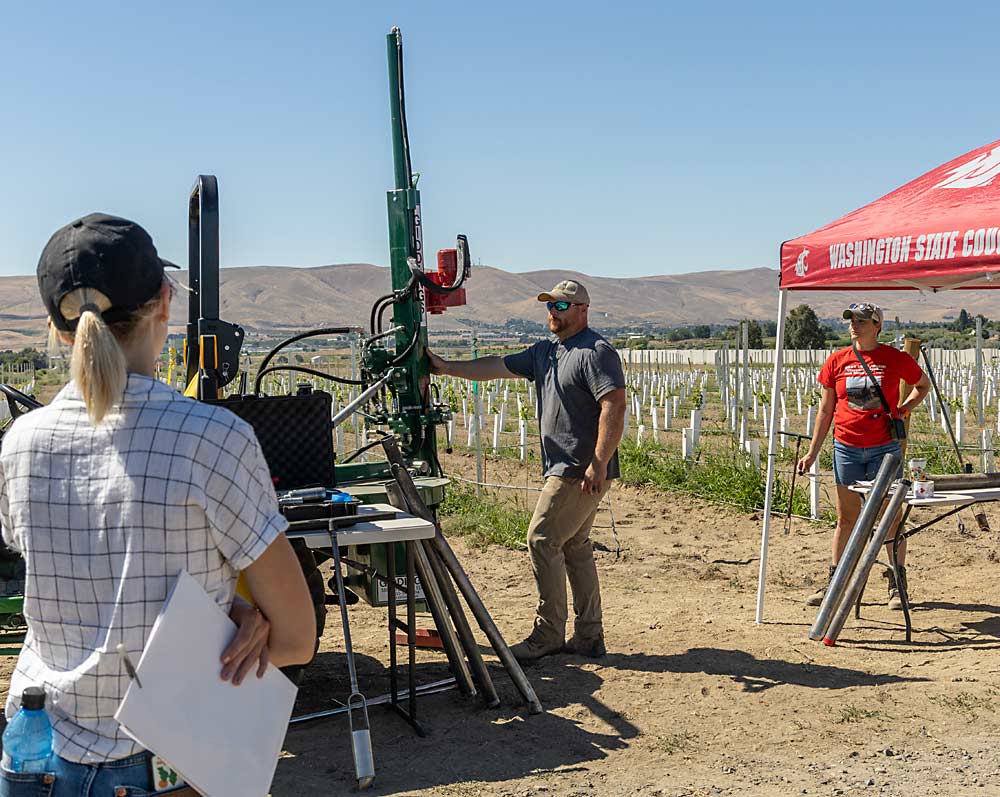
He took preplant soil core samples and plans to follow with postplant samples this fall. Already, he has found that water penetration can be up to 100 times slower in samples collected from the alley row where tractors are driven compared to locations without tractor compaction.
Rippner plans to hold annual field days in the soil health vineyard to share research outcomes and demonstrate technology and equipment. In the future, research wine will be made from different soil management treatments to learn if various soil management practices impact or influence wine quality.
Improving soil health is a long-term investment, but it’s key to the sustainability of Washington’s wine industry. We look forward to learning more about the role of management practices on soil health metrics and the effects of practices on vine growth and wine quality.
—by Melissa Hansen
Want to learn more about all things soil health?
The Washington Soil Health Initiative is a wide-ranging plan that funds research, extension and demonstration of soil health best-management practices through a network of long-term agroecological research and extension (LTARE) sites across Washington state’s diverse agricultural systems. The Washington State Legislature provides funding to the Washington Department of Agriculture, Washington State Conservation Commission and Washington State University.
To learn more about the initiative and the research underway, visit the program website at: washingtonsoilhealthinitiative.com.

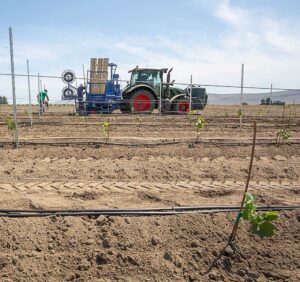
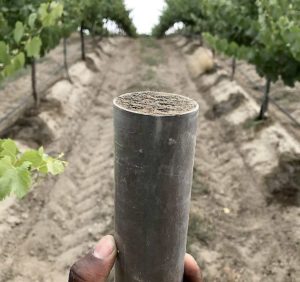
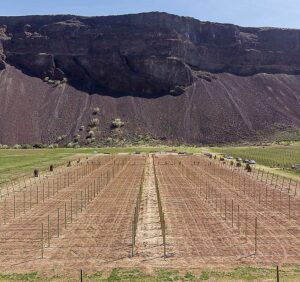





Leave A Comment